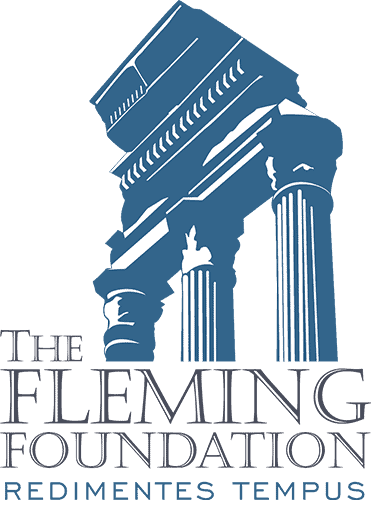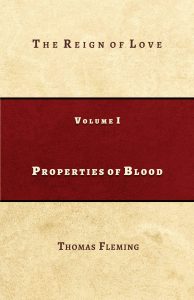Tuscan Histories: The Etruscans
Reserving more on the travel hints for future posts, it is time to embark on the long-term project of answering the question: Why go to Tuscany in the Winter, when you can go to Sicily, Crete, or Costa Rica? Everyone has read or seen Under the Tuscan Sun, but who wants to endure “Under the Tuscan Wind, Rain, and Flooding?”
If they were asked about the sources of Western civilization, most literate people, until fairly recently, would anticipate a discussion of the Greeks and the Romans, and, if they were warned that the topic would be the most ancient roots, they might think back to the Egyptians, the Sumerians, and the Children of Israel. Going forward from the collapse of the Roman Empire of the West, they might expect to hear about England or France, and, as an afterthought perhaps, Renaissance Florence. Comparatively few of them would be aware of the important role played by Medieval Italy in the transmission and revival of civilization.
There are many aspects to this story. One might concentrate on Rome itself, its decline into a malarial village and its slow rise to splendor in the Renaissance, or Ravenna, where Romanitas held on precariously for over a hundred years after the Germanic conquest of Italy or the great imperial republics of Venice and Genoa, or even the great cities North of the Po River—Milan, Mantua, Verona. All of them are worth our attention, and, if there is time, some at least will be covered in this series, but we shall begin with the cities and culture of Tuscany, a region as old as Rome—or even older. There are many towns, but I shall be concentrating on a few of the most important, particularly, Pisa, Lucca (which was a anciently a part of Liguria), Siena, and, of course Florence.
In most accounts of Tuscan history, both popular and academic, Florence gets the lion’s share of attention. When we think of its great wealth and population, the significance of writers such as Dante and Machiavelli, and the splendor of its painting, this focus on Florence seems inevitable, but from the beginning I want readers to bear in mind two considerations: First, other Tuscan cities developed earlier than Florence and have made unique contributions to art and politics, and, second, the predominance of Florence was always at the expense of other, equally creative communities.
When I first visited Tuscany in 1988, I was on my way to an international classics conference in Pisa, where I was to give a paper, with Prof. Kopff, based on work I had done for my dissertation. On the way, I stopped off outside of Florence to see a friend and colleague, Leo Radistsa whose maternal grandfather, a great scholar and journalist Guiglielmo Ferrero, had lived in the Colli Chianti. So I, my wife, and two older children stayed a few days in the villa of Ulivello reached by the Strada in Chianti.
If you have ever traveled on your own to a strange place, where you did not know the language and customs, you will understand our bewilderment. We could not even manage to reach Leo by telephone from the Santa Maria Novella station in Florence—it turned out not to be a local call—and decided to take a taxi. In those days, one could not count on a taxi driver speaking English. (In fact hardly anyone in the station, except for a policeman, seemed to speak English.) I had a dictionary, though, and nothing daunted wrote down in Italian, please take me to this address. Without difficulty, the driver took us to the correct address, without bothering to tell us in advance that he would charge double because he had to drive back to Florence.
Leo was a kind host and took us one afternoon into Florence. It was hard not be overwhelmed by the city, and we were beginning to regret our decision to spend a week in Pisa instead of Florence, when Leo repeated something his cousin had told him: If you visit other towns in Tuscany, you can always tell when they were subjugated by Florence, because the exuberant energies they had previously directed to building churches and public buildings ceased. Instead, you would see, frowning from a central hilltop, were the fortezze built by the Medici.
The Etruscans
Modern Tuscany was once the ancient land of Etruria, the home of the Etruscans (Tyrrhenoi in Greek, hence the Tyrrhenian Sea). Though Etruscans pushed into the Po Valley and South to Salerno, their heartland encompassed the regions of modern Italy now known as Lazio, Umbria, and of course, Toscana. Some of the most famous ancient Etruscan settlements dwindled to nothing in Roman times--Vulci, Veii, Cerveteri, Tarquinia—while others have remained significant towns: Chiusi, Volterra, Lucca, Arezzo, and Rome itself, which came under Etruscan domination under the monarchy. Etruscan villages stood within the boundaries of Florence, Siena, and Pisa, though none of these towns were important until Roman times. In Roman times Lucca, which became the capital of Lombard Tuscany, belonged to Liguria, though the Etruscans had absorbed the town.
The origins of the Etruscan people has been a subject of much debate. Herodotus regarded them as an offshoot of the Lydians who lived in Asia Minor, but the evidence is scanty. Others have argued for northern origins, while still others for the Etruscans as an indigenous Italian people. (The only parallels found connect them with the island of Lemnos.) The great figure in Etruscan studies, Massimo Pallotino, made a convincing case for the Etruscans as a people of diverse origins, rather like the French, who began to coalesce in the Iron Age Villanova culture, and his theory, refined and elaborated, has won the support of many prominent Etruscologists. So, while some aspects of Etruscan culture, for example language, might have been introduced from the East (though not by Lydians), the Etruscan people formed their identity in Italy. Even in historical times, Etruscans and Italians were intermixed in some fringe areas, where the inhabitants of an Etruscan city spoke the dialect of their Italic neighbors.
Recent genetic studies indicate that the Etruscans are hardly distinguishable from their Latin neighbors, and while this is important evidence, it says nothing about the possibility of immigrants arriving some time in the Second Millennium.
Etruscans were great seamen, and they were known early on to the Greeks who described these competitors as pirates. They allied themselves with Carthage in a common struggle against the Greeks, and Aristotle says that a citizen of an Etruscan town had citizenship rights in Carthage.
By the 7th Century B.C., a distinctive Etruscan culture had emerged. Although the Etruscan mythology studied by my old friend Larissa Bonfante was so far as one can tell borrowed from the Greeks, Etruscan religion, while it included deities borrowed from Greeks and Italians, also had both peculiarly Etruscan deities and Etruscanized foreign gods. They were renowned for their expertise in divination. To ascertain the will of the gods, Romans were content to divide the sky into four quarters, and when the observed prodigious occurrences, such as thunderbolts, it was enough to say that they indicated divine anger and draw rough conclusions about the cause. The subtler Etruscans made sixteen divisions and also took into account the color of the bolts. Romans, even after subduing the Etruscans, respected their sooth-sayers, and great Roman nobles are known to have had Etruscan haruspices in their entourage. Julius Caesar had such an advisor, and he is said to have warned Caesar to beware the Ides of March.
One feature of Etruscan culture that can best be understood by looking at the vase paintings and funeral monuments is a kind of death obsession that finds echoes in Medieval Tuscan painting. They also celebrated funeral games at which men were forced to hack each other to death--the origin of Roman gladiatorial games. Despite or because of the obsession with death, Etruscans were a fun loving people: funeral monuments typically display the deceased as a pot-bellied man with wine cup in hand reclining at banquet with a woman presumably his wife. They loved easy living, and despite their conflict with Greece, they absorbed much of Greek civilization, especially the arts of luxury. Luxuries require money, and these people were great merchants who created a commercial empire by trading and conquest.
Like most commercial peoples, the Etruscans were city and village dwellers rather than scattered farmers, and instead of building one dominant city (like Rome or Carthage), Etruscans mostly lived in free cities that were in league with each other. While the Etruscan heartland is basically modern Tuscany, the spread their authority and culture northward toward the Po and Southward to the Bay of Naples, where they were in close contact with the Greek cities of Magna Grecia. Several of these cities, such as Rhegion/Reggio in Calabria and Cumae were founded by Chalkis in Euboea, whose version of the Greek alphabet was adopted by Etruscans and passed on to Italian peoples such as the Romans.
Many of their qualities are absorbed into the Tuscan character. Modern Tuscans are proverbial for their good food and wine—as well as for a somewhat cruel sense of humor. They have been good businessmen for the most part, especially in the Middle Ages and the Renaissance, famous for taking risks and for engaging in rivalries and feuds. The Etruscans were brave soldiers, but their failure to form a larger commonwealth may have made them easy pickings for the more disciplined Romans. Their enjoyment of luxury may also have been a contributing factor to their decline. In any event, by the 4th century, Etruria fell under Roman domination and was absorbed into their realm. Nonetheless, Tuscany was still a distinctive place in the Age of Augustus, who relied on the Etruscan Knight, Maecenas as his political advisor. Maecenas came from Arezzo (Arretium) one of the most powerful cities in the Etruscan alliance.
In Modern times, Etruscans have been imaginatively portrayed as enigmatic. Much of the enigma is our lack of knowledge. Their language has been partially deciphered, but few of the texts are very informative. Since the 16th century unbalanced Europeans and Americans have been engaged in a search for alternatives to a Western tradition that was classical and Christian. Some, like Montaigne and Rousseau, pretended to find riches in the primitive cultures of the pre-colonial Americas; for others, it has been the Far East; still others have reached for the obscurantist absurdities that lie at the base of occultism, while the "Out of Africa" myth-makers have joined primitivism and occultism into an inglorious synthesis that might have been concocted by Stan Lee. The Etruscans, alas, through no fault of their own, have become one of those mysterious alternatives, and no less a neurotic than D.H. Lawrence devoted an entire book of disinformation to the people he imagined to be his heroes. Anyone, Lawrence thought, but the Romans, because you know what Rome ultimately became....
We'll have more to say about the Etruscans as the trip goes on. (Notice the optimistic use of the indicative!)




I’ve always been interested in the Etruscans, not as alternatives to the Greeks or Romans, but rather as cultural forebears about whom we know so little. I see them rather as complementary to the Greeks and Romans, though of course not as important even though they did make important contributions to our civilization. Transmitting the Greek alphabet to the Romans is of course an example of that. One wonders what may have been lost and wishes that at least Claudius’ works on them had survived.
In response to your comment, I first added this sentence: Recent genetic studies indicate that the Etruscans are hardly distinguishable from their Latin neighbors, and while this is important evidence, it says nothing about the possibility of immigrants arriving some time in the Second Millennium.
Second, I am adding one more brief post about the significance of the Etruscans.
Thanks for the discussion of the Etruscans, Tom!
I recall that in the 1950s those people called adults captivated me by their discussions of the origin of the Etruscans. The most romantic answer–the Etruscans were the descendants of the vanquished heroes of Troy. That appealed to me. To a degree it’s a shame that DNA suggests they were just one more group of Latin peoples in the Italian peninsula.
I wonder how accurate the DNA analysis can be. Do they have enough DNA samples from enough proven Etruscan skeletons to compare with their Latin neighbors in, say, 700 or 800 BC? Or are these DNA samples from a much later period when the Etruscans had perhaps become mixed with their Latin neighbors. If they are people of the same stock, why was the Etruscan language so very different from the Latin language of the peoples around them?
I have added this prefatory paragraph to this brief account of the Etruscans:
Modern Tuscany was once the ancient land of Etruria, the home of the Etruscans (Tyrrhenoi in Greek, hence the Tyrrhenian Sea). Though Etruscans pushed into the Po Valley and South to Salerno, their heartland encompassed the regions of modern Italy now known as Lazio, Umbria, and of course, Toscana. Some of the most famous ancient Etruscan settlements dwindled to nothing in Roman times–Vulci, Veii, Cerveteri, Tarquinia—while others have remained significant towns: Chiusi, Volterra, Lucca, Arezzo, and Rome itself, which came under Etruscan domination under the monarchy. Etruscan villages stood within the boundaries of Florence, Siena, and Pisa, though none of these towns were important until Roman times.
Excellent questions, Roger. I do believe that DNA analysis is a long way from answering many of the questions that it is supposed to revolve. I know someone who got one of those kits from a reputable dealer. Her paternal background is Welsh and English, while her mother was half Slovak and half British. The test claimed she had a great deal of “Iberian” DNA. I believe it is the case that the British DNA has a large substratum of pre-Indo-European akin to the Basques. Number-crunching without a serious knowledge of history is a perilous enterprise.
I’d have to look at the specific studies to make a judgment on their accuracy, but in an area of interbreeding and war, a lot of jumbling could take place. Let us say that had a dozen skeletons from 8th century Etruria. How do we know which of them were really Etruscan as opposed to people who had married Etruscans or were part-Etruscans or soldiers fighting for the Etruscans.
We humans are said to share 98.8 % of our DNA with chimpanzees. And over 99% with all humans. Yes, there are hundreds of thousands of differences in genes between racial groups, but variations within groups is as great or greater.
Herodotus’ claim that the Etruscans were Lydians who arrived in the middle of the Second Millennium cannot be disproved by DNA evidence, the earliest of which comes from perhaps seven centuries after their supposed arrival in Italy. The great geneticist Cavalli-Sforza had concluded that Central Italians–from Lazio, Toscana, Umbria–had a common genetic background he termed “Etruscan”. That is still about as far as we can go.
I have heard of lilly white Irish, Norwegians, and even a Finn who were told by DNA tests that they were, depending on the test, from 2 to 3 percent upwards to ten or fifteen percent “Central African Congoid” when obviously that was impossible. One wonders about the politics behind telling such people things like that. Then there was a Moroccan girl living in Canada who took something like six or seven tests from different companies. She had one German great grandmother. The tests said that she was either mostly or not at all “Northwest European”, and one said she was partly “Upper Midwest American”, because as we all know, there are a lot of Germans there because that’s where the Germans came from when they migrated to Europe. Some tests said she was partly Turkish, Jewish, or Central African, while others did not. One said she was almost all Iberian. At this rate we will never know who the Etruscans were.
The safest bet might be that they were distant relatives of the Basques who absorbed one or more groups of Indo-Europeans.